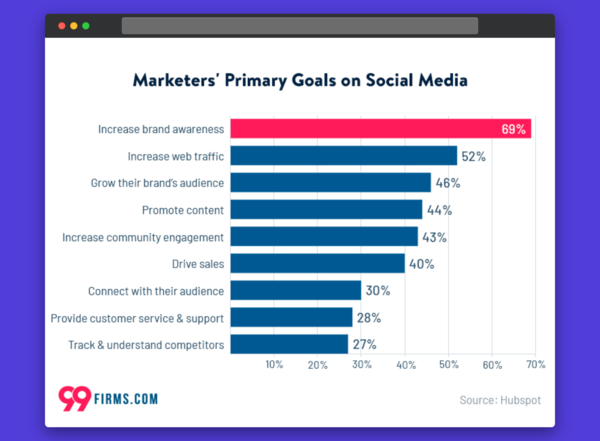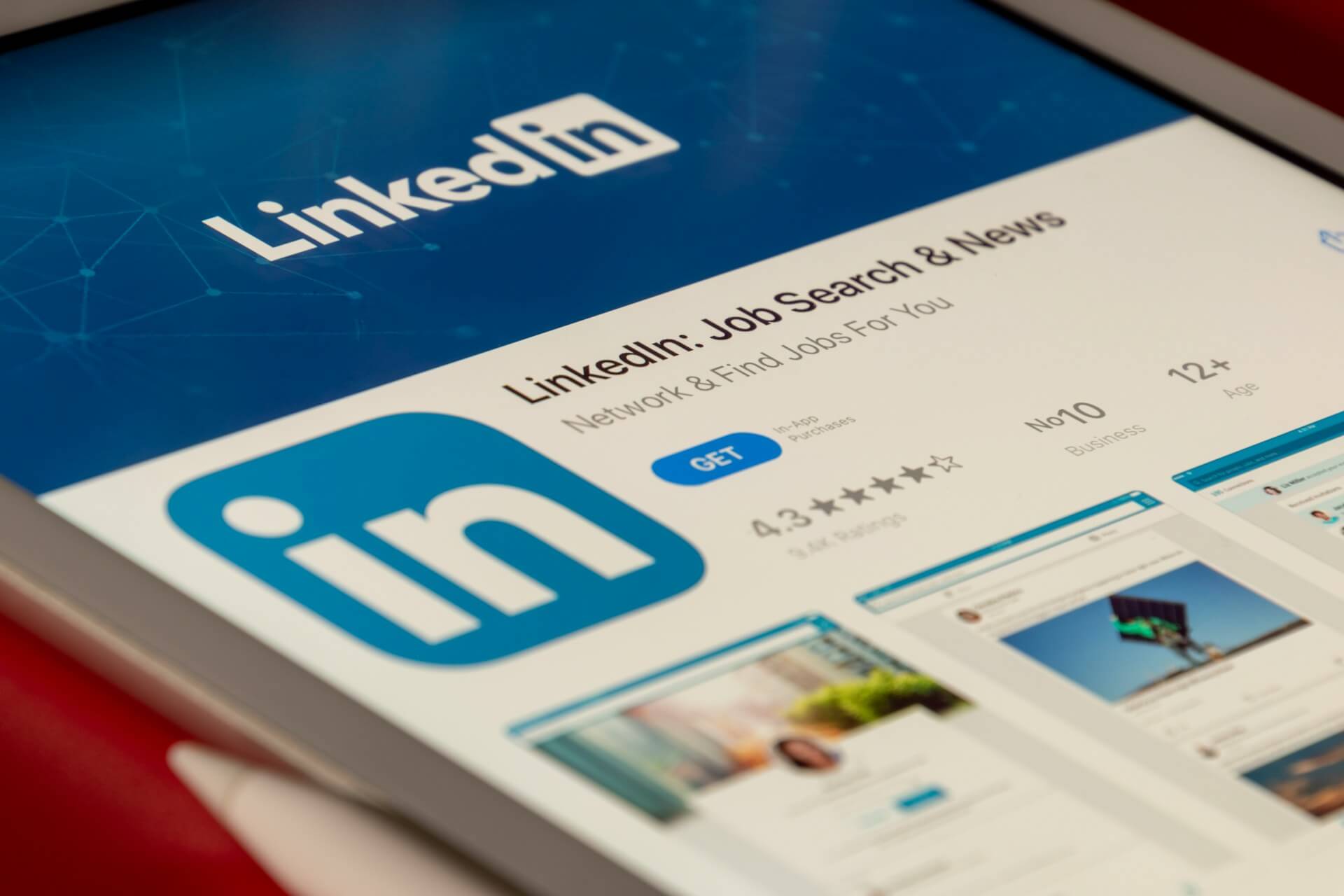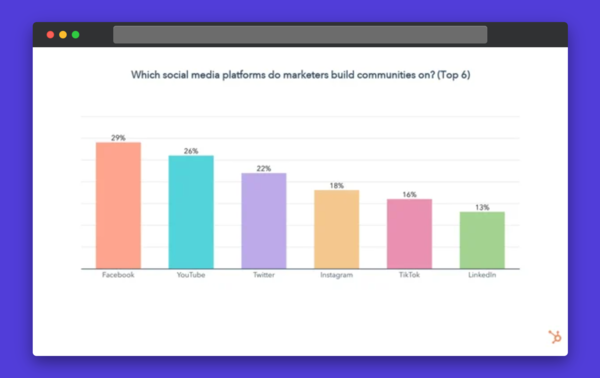Sendible insights Social Media Algorithms: How They Work, How to Optimise Content for Them, and More
Social media algorithms are the invisible force behind what we see in our feeds, shaping everything from content visibility to engagement.
So understanding how these algorithms work is crucial for businesses and marketers, as it allows us to reach the right audience and boost performance.
In this post, we’ll discuss the key factors that influence algorithm visibility and share strategies for optimising your content and maximising impact.
Table of Contents
- Understanding social media algorithms
- How algorithms work on major platforms
- Factors that influence algorithm visibility
- How to optimise content for the algorithm
- FAQ Section
- Conclusion
Understanding social media algorithms
No matter what your goal is for social media, understanding how algorithms work is essential. This is especially true considering that the overwhelming majority of companies want to increase brand awareness, which is built on visibility.

An algorithm is simply a set of rules or instructions a platform uses to decide which content gets shown, when, and to whom. On social media, they’re responsible for curating each user’s feed and determining what content appears. They’re based on an ever-shifting combination of signals like relevance, engagement, timeliness, and user behaviour.
What makes things tricky is that social media algorithms aren’t fixed. They’re dynamic and constantly evolving, shaped by data, machine learning, and changes in user behaviour. Every like, comment, share, and scroll contributes to what the algorithm learns and prioritises.
Platforms also regularly update these systems to meet their own goals. Those goals can include increasing time spent on the app, surfacing more paid content, or enhancing user experience.
How algorithms work on major platforms
Each platform has its own algorithmic logic. Instagram, for example, heavily weighs engagement and watch time on Reels.
LinkedIn prioritises relevance to your professional network and recent activity.
TikTok’s algorithm is arguably the most advanced at content discovery, surfacing videos based on nuanced user signals rather than who you follow.
That said, here’s a more in-depth look at each one.
Instagram: Engagement, recency & relationships
Instagram’s algorithm is all about delivering relevant content that keeps users on the app longer. It considers several key signals to decide what shows up in the feed, Stories, Reels, and Explore tab. Like these:
- Engagement is king. Instagram prioritises posts that drive meaningful interactions—likes, comments, shares, saves, profile visits, and even DMs triggered by a Story. The more engagement a post gets early on, the more likely it is to be shown to others.
- Recency still matters. While the feed is no longer purely chronological, timeliness plays a role. Newer posts are favoured, especially when they’re from accounts a user frequently engages with.
- Relationships drive visibility. Instagram ranks content from accounts a user interacts with the most. These are people they DM, comment on, or watch Stories from regularly.
- Content type and format. Different sections of the app prioritise different formats. Reels are pushed heavily for discovery and reward high watch time, replays, and shares. Stories focus more on consistency and regular viewing habits. Feed posts benefit from a mix of likes, comments, and saves.
- Session behaviour. How long someone spends on the app and what kind of content they consume influences what Instagram shows them. The algorithm adapts to each user’s micro-preferences over time.
💡Tip: Focus on sparking conversations and saves—these signal deeper interest than likes alone. And be consistent; frequent, quality posts build the kind of engagement the algorithm loves.

TikTok Metrics: Your Guide to Tracking TikTok Marketing ROI
TikTok: Interest-based content and viral trends
TikTok’s algorithm is laser-focused on discovery, serving users content they didn’t know they wanted but can’t stop watching. It’s less about who you follow and more about what holds your attention.
Here’s how it works behind the scenes:
- User interactions are key. Every action you take—likes, comments, shares, follows, replays, and even watch time—helps TikTok learn what kind of content you enjoy. Videos that generate strong engagement signals are more likely to be promoted on others’ For You pages.
- Watch time is everything. The algorithm favours videos that are watched to the end, rewatched, or looped. The completion rate is one of the most powerful indicators of content quality and relevance.
- Content and caption analysis. TikTok scans video content (including text on screen), captions, hashtags, and even sounds to understand the topic. This allows it to push content to users who’ve shown interest in similar themes.
- Trends accelerate reach. Using trending sounds, effects, or formats increases the chances of being surfaced to a broader audience. Jumping on viral trends early gives content more exposure while the trend is hot.
- Minimal follower bias. Unlike other platforms, follower count isn’t a significant factor. Even brand-new accounts can go viral if the content resonates.
💡Tip: Keep videos short, punchy, and engaging from the first second. Use on-screen text, trending audio, and relevant hashtags to help the algorithm categorise and distribute your content more effectively.
Facebook: Connections and content type
Facebook’s algorithm prioritises meaningful interactions and personal connections over passive content consumption. For brands, this means creating content that feels relevant, conversational, and community-driven.
Here’s what drives visibility on the platform:
- Close connections take priority. Facebook wants to show users more content from friends, family, and the groups they interact with. Posts from Pages can still break through—but only if they spark interaction.
- Engagement quality > quantity. Comments are more valuable than likes. The algorithm looks for posts that drive conversation between users, not just reactions.
- Content type matters. Facebook prioritises:
✅Videos, particularly native uploads and live streams, get more reach than external links.
✅Posts that ask questions, invite discussion, or feel community-led.
✅Groups—content from active groups is more likely to appear in feeds, especially if the group is niche or local.
- Link posts are deprioritised. External links generally get less organic reach unless they’re widely shared or heavily engaged with.
- Timeliness and consistency. Recent posts perform better, especially when paired with consistent posting habits. Facebook rewards Pages that stay active and engaged with their audience.
💡Tip: Focus on community-building and authentic interaction. Create content that encourages users to comment and engage with each other, not just with your brand.
LinkedIn and X (Twitter): Relevance and interactions

LinkedIn Profile Best Practices For 2025
While LinkedIn and X (formerly Twitter) serve different audiences, both rely heavily on relevance, recency, and engagement to surface content. For businesses and thought leaders, creating timely, value-driven posts is key.
LinkedIn’s algorithm is designed to prioritise professional relevance and spark industry-related conversations. Here’s what influences reach:
- Personal connections and niche relevance. LinkedIn prioritises posts from your network and people in similar industries. It assesses relevance by looking at shared interests, job roles, and groups.
- Engagement in the first 60 minutes. Early interaction—especially comments—signals quality. Posts that perform well in the first hour are distributed more widely.
- Comment-heavy posts perform best. The algorithm boosts posts that generate thoughtful discussion. Shares and reactions help, but comments (and replies to comments) carry the most weight.
- Native content preferred. Like Facebook, LinkedIn deprioritises external links. Native text posts, carousels, and short videos perform better in-feed.
- Creator activity matters. Consistency, post quality, and your history of engaging with others all influence how your posts are treated.
💡Tip: Post during peak business hours, use 1–3 relevant hashtags, and aim to start conversations. Don’t just share updates.
X (Twitter)
X’s algorithm balances chronology with content relevance and user interaction patterns. Here's how it works:
- Recency still counts. Fresh content is more visible, especially in the Following tab. The For You feed blends new and older tweets based on engagement potential.
- Engagement signals. Likes, retweets, replies, and profile clicks influence visibility. The more interaction a tweet gets early on, the more it’s pushed across feeds.
- Content from active users is prioritised. If you engage regularly—tweeting, replying, joining conversations—your content is more likely to appear on others' For You pages.
- Relevance to interests. X tracks what users engage with to surface similar content. Even from accounts they don’t follow.
- Media-rich tweets perform better. Visuals like images, polls, and short videos get more engagement, especially when paired with concise, high-impact text.
💡Tip: Post often, jump on trending topics thoughtfully, and interact with your community to stay visible in real time.
Factors that influence algorithm visibility
No matter the platform, social media algorithms are driven by signals that help them determine what content deserves to be seen. While the specific rules vary from one app to another, a few core factors consistently influence how widely your content is distributed.
Here are three major drivers of algorithm visibility:
✅Engagement metrics. This includes likes, comments, shares, saves, profile visits, and clicks. Algorithms are built to reward content that sparks interaction. But it’s not just about quantity. Quality of engagement matters too. Thoughtful comments and discussions carry more weight than passive likes, especially on platforms like LinkedIn and Facebook.
✅Video watch time. This is especially relevant for platforms like TikTok, Instagram Reels, and YouTube Shorts. Watch time is a key indicator of content value. If users watch your video all the way through, it sends a strong signal to the algorithm that your content is engaging. Higher retention typically leads to greater reach.
✅Timeliness and consistency. Algorithms tend to favour recent content, but they also reward brands and creators who post regularly. A consistent posting schedule builds trust with the algorithm, while irregular activity can result in decreased visibility. Timeliness also refers to capitalising on trending topics or formats while they’re still hot. Jumping in early can give your content a visibility boost.
How to optimise content for the algorithm
To maximise visibility, your content needs to work with the algorithm, not against it. Here’s how to fine-tune your posts for better reach and engagement across platforms:
- Prioritise high-performing formats. Short-form video continues to dominate. Think Reels, TikToks, and YouTube Shorts. On LinkedIn and Facebook, native image carousels, text posts, and live video also perform well. Use each platform’s preferred format to stay algorithm-friendly. Once you find content that works really well for you, you can even use a tool like Sendible’s Smart Queues to find and reuse evergreen content.
- Use hashtags strategically. Hashtags help algorithms understand your content’s context and surface it to the right audience. Stick to 3-5 relevant hashtags per post. Overdoing it can look spammy and dilute your reach.
- Post at the right times. Timing still matters. Share content when your audience is most active. This is typically early mornings or lunch hours on weekdays for B2B, and evenings or weekends for B2C. Then, monitor analytics to refine your schedule.
- Be consistent, not spammy. Regular posting trains the algorithm to expect activity from your account. Aim for quality over quantity. A few strong posts per week are better than daily filler.
FAQ Section
Do hashtags help with social media algorithms?
Yes, hashtags do help social media algorithms when used strategically. They provide context about your content, allowing the algorithm to categorise it and show it to relevant users. However, quality and relevance matter more than quantity. Using a few well-chosen hashtags is far more effective than overloading a post.
How often do algorithms change?
Social media algorithms change frequently, often without warning. Platforms regularly tweak their systems to improve user experience, prioritise new features, or adjust to shifting behaviours. While some changes are minor, others can significantly impact reach and engagement, which is why staying agile and monitoring performance trends is key.
Can you beat the algorithm with paid content?
Yes, you can bypass algorithm limitations with paid content. Paid ads allow your posts to reach a broader, targeted audience, regardless of organic algorithmic restrictions. However, even with paid content, engagement and relevance still play a role in maximising performance, so it’s crucial to craft compelling, engaging ads.
Conclusion
Understanding social media algorithms is key to navigating the ever-changing landscape of digital marketing.
By optimising your content, staying consistent, and adapting to updates, you can ensure your brand stays visible and engaging. Keep testing, learning, and evolving to stay ahead of the algorithm curve!
Freya Laskowski
Freya is an SEO consultant that helps brands scale their organic traffic with content creation and distribution. She is a quoted contributor in several online publications, including Business Insider, Fox Business, Yahoo Finance, and the Huffington Post. She also owns CollectingCents- a personal finance blog that she grew from the ground up.
You can reach out to her at freya@collectingcents.com
Text copied!


